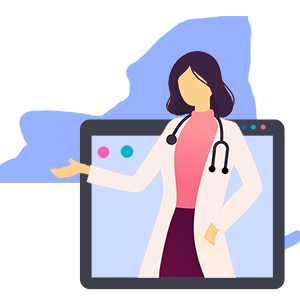NY WCB Bulletin: Telehealth Bill Objections

Heads up, New York State providers: the Workers’ Compensation Board (WCB) recently issued a bulletin clarifying when payers can (and cannot) object to a bill for treating injured workers via telehealth.
In short, if a provider renders telehealth treatment, a payer may not object to the bill unless New York regulations specifically preclude rendering that treatment via telehealth (e.g., initial visit with a provider or visits to determine permanent impairment).
WCB: Telehealth Should Be Reimbursed Unless Precluded by Regulations
Effective July 11, 2023, Title 12 of New York Codes, Rules and Regulations (NYCRR) outlines the appropriate use of telehealth for workers’ compensation treatment in Section 325-1.26.
Based on a July 13, 2023 email message from the New York WCB (which can be viewed here), even if a payer believes that treatment rendered by a physician, nurse practitioner, physician assistant, or podiatrist via telehealth has been provided improperly pursuant to §325-1.26(b)(1), the payer must reimburse for the services.
The only exception is if the telehealth services are “clearly precluded” by §325-1.26. The WCB message states:
“When a payer believes that treatment by a physician, nurse practitioner, physician assistant, or podiatrist via telehealth has been provided improperly pursuant to 12 NYCRR 325-1.26(b)(1), the fact that medical treatment was provided via telehealth should not be the sole basis for a legal objection to a bill for such treatment, and the services should be reimbursed, unless they are such that telehealth is clearly precluded by the regulation…”
NY Exceptions: When NOT to Treat Via Telehealth
As shown in the quote above, the bulletin instructs payers to reimburse for telehealth services “unless [the services] are such that the regulation clearly precludes telehealth.”
Accordingly, payers may object to a telehealth bill when telehealth is barred explicitly for the services by §325-1.26, such as:
- The initial visit to the provider
- Visits to determine permanent impairment
- Every third clinical encounter during the Acute and Subacute phases of the injury or illness
- Every three months during the Chronic phase of the injury or illness
- The annual visit when the injury or illness is at Maximum Medical Improvement (MMI)
According to the bulletin, when a payer faces unspecified “more nuanced instances” of possible inappropriate telehealth use, the payer must reimburse the provider.
Subsequently, the payer is allowed to formally request that the provider render similar treatment in person going forward:
“In other more nuanced instances where the payer believes that medical services for a physical injury or illness are being improperly rendered via telehealth, the services should be reimbursed, but the payer may request that future similar services be conducted in-person by filing a Request for Further Action by Insurer/Employer (Form RFA-2).”
The bulletin notes that if the WCB orders a specific service to be delivered in person, a provider who delivers that service via telehealth may be subject to “administrative action.”
Finally, the WCB reminds all parties that treatment may never be rendered via telehealth by certain types of providers; payers are therefore always allowed to object to telehealth bills sent by:
- Chiropractors
- Acupuncturists
- Physical therapists
- Occupational therapists
Stay tuned to this space; we’ll report on any further updates or clarifications to telehealth billing for New York workers’ comp. For further questions, use the pink chat icon in the bottom right of this screen, or email our experts at info@daisybill.com.
daisyBill makes workers’ comp billing easier, faster, and less costly. Request a free demonstration below.
REQUEST DEMO
DaisyBill provides content as an insightful service to its readers and clients. It does not offer legal advice and cannot guarantee the accuracy or suitability of its content for a particular purpose.

.gif)


.gif)
